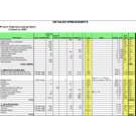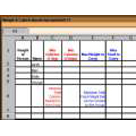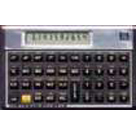AWG is an abbreviation for "American Wire Gauge" and is the U.S. standard for wire conductor sizes. AWG is also sometimes referred to as Brown and Sharpe or B & S Wire Gauge. The "gauge" means the diameter. AWG is most frequently applied to copper household electrical wiring and telephone wiring but also includes other non-ferrous materials. Telephone cables are usually 22, 24 or 26 AWG with the higher numbers referring to the thinner wires. The AWG numbering system is logarithmic and by knowing a couple of parameters, you can easily calculate approximate values for other AWG gauges.
Resistance:
- AWG 15 copper is about 10 milliohms per metre.
- Adding 3 to the AWG number doubles the resistance.
- Subtracting 3 from the AWG number halves the resistance.
- Adding 10 to the AWG number increases the resistance by a factor of 10.
- Subtracting 10 from the AWG number reduces the resistance by a factor of 10.
Diameter:
- AWG 18 has a solid core diameter of about 1.0 mm.
- Adding 6 to the AWG number halves the diameter.
- Subtracting 6 from the AWG number doubles the diameter.
- Adding 20 to the AWG number reduces the diameter by a factor of 10.
- Subtracting 20 from the AWG number increases the diameter by a factor of 10.
In practice, an approximation of the AWG number is all that is required to select a suitable product or to compare two similar products.
Click an image below to
Shop Our Range Today!
Explore our extensive range of Network and Data Cables, Power Cords, Power Supplies, Server Racks & Accessories, Tools and Test Equipment designed to meed your data, security and communication needs.
Experience the Access Advantage
Elevate your data, security, and communications solutions with Access Communications. Our unwavering commitment to quality, expertise, and innovation sets us apart as Australia's premier supplier. With over four decades of trusted service, we offer an extensive range of products tailored to your diverse needs.
Why Choose Access?
- Quality Assurance: Rigorous testing ensures excellence in every product.
- Expertise: Benefit from 50 years of industry knowledge and personalised service.
- Extensive Range: Find solutions for all your requirements, from network cables to custom assemblies.
- Customisation: Tailored solutions to fit your unique specifications.
- Forward-Thinking: Stay ahead with innovative products designed for the future.
- Unmatched Service: Experience unparalleled support and dedication to your success.
Join the thousands who trust Access Communications for their data, security, and communications needs. Explore our offerings and discover the Access Advantage today!




